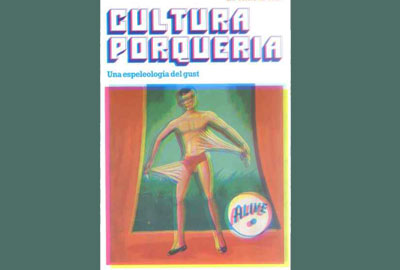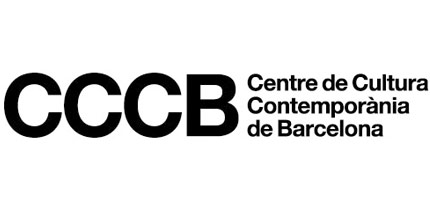Exhibition
Trash culture. The Potholes of Taste
Painting, music, television... The products of trash culture are those that 'official' culture brands as aberrant, but which the consumer, by means of irony, can elevate to the category of fascinating.
Trash culture tends to be spoken of with pejorative intent: it is a discriminatory expression used to mark out the boundaries between good taste - usually endorsed by the consensus of the cultural elite - and the chaotic, disorderly fringes of as yet unaccepted and undisciplined aesthetic pleasure. Nonetheless, trash culture provides a pop answer to insidious questions about the place of art that run through the history of modernity.The exhibition proposes a look at this aesthetic - its origins, icons, languages and functioning - and invites visitors to become conscious, active trash spectators. TRASH CULTURE is a journey to excess, distortion, intensity, heterodoxy, irony and criticism, and is also an exhibition for discovering a process of aesthetic enjoyment that is becoming more and more everyday.
Curators: Jordi Costa
1.- Beauty in Ugliness
Trash culture consists in succumbing to beauty in monstrosity. Our journey therefore begins with the early days of the show-business industry that brought into the limelight the stage for the remoter regions of loveliness: the freak show. Here lies the germ of the impetus that was later to become a fascination with a form of art that was aberrant, inharmonious and aesthetically dubious (the kitsch melancholy of painters such as Margaret Keane and her many imitators) or morally reprehensible (the macabre and ingenuous traces of what is known as 'serial-killer art'). Trash culture is, on occasion, a form of pop archaeology, a campaign, somewhere between the ironic and the sincere, for aesthetics that the constant evolution of tendencies threatens to condemn unjustly to oblivion: this is the case of the unbridled urban planning and the tourist-industry architecture of seventies' Spain that are celebrated on web pages like Torremolinos Chic or Zaragoza De Luxe.
Exhibition
This first section of the exhibition reproduces the atmosphere of early twentieth-century freak shows; it presents original work by Margaret Keane and some of her followers (Igor, Gig, Ozz Franca), brings together a selection of reproductions from the perverse, alternative serial-killer market (Charles Manson, John Wayne Gay, Herny Lee Lucas...) and, via the Internet, presents visitors with the unimpeded urban planning and architecture of the 1970s that are celebrated by certain collectives.
2.- An insubordinate spectator
Trash culture tends to be a construction in the eyes of the beholder: an epiphany experienced by a watchful gaze that has to develop special rituals of aesthetic enjoyment and delight to be able to share and perpetuate this moment of private pleasure. The mutant spectator, given over to the collective recreational ceremony of pulling a bad film to pieces at a late-night cult session, has very little in common with the cinema-lover, set to contemplate a masterpiece of the seventh art in passive reverence. The trash spectator's radar is fine-tuned for discovering treasures in unlikely places, but also for picking up the reception codes that will turn this discovery into a different form of art. Trash culture advocates active, undogmatic communication between the work and the consumer.
Exhibition
A succession of display cases filled with film programmes, posters, promotional objects, flyers, magazines and so on takes the visitor on an alternative tour of the history of the cinema. This section culminates in a small auditorium where the film Carne is shown.
3.- The coincidental avant-garde
Trash creators tend to formulate their discoveries without making a prior plan. The work of trash in a pure state is unpremeditated, spontaneous, natural: the result of good intentions, which, in some cases, produces extreme aesthetic solutions that are, purely by chance, comparable with the transgression of the established languages proposed by avant-garde movements. Trash culture is, in most of its expressions, a kind of coincidental avant-garde which is diametrically opposed to mediocrity. The example of Ed Wood Jr., regarded as the worst director in the history of the cinema, is a case in point: the intensity of his incorrectness was crystallised as a series of elusively lovely one-off works that have gone on to influence the work of such a characteristically experimental creator as David Lynch.
Exhibition
A look at the figure of Ed Wood, an icon of trash cinema, in the form of audiovisuals and various objects related with the film-maker.
4.- The activism of taste
Rummaging through cultural trash is also one possible way of constructing an aesthetic menu on the fringes of market dictates. At a time when the dictatorship of taste seems to stifle any possibility of aesthetic dissidence, trash aesthetes have a responsibility to establish their own private religion by rescuing icons from oblivion and recycling discourses outside their original context. Record collectors with a trash streak have discovered mines of talent and unwonted experimentation in areas overlooked by the hit parade and the official story of pop.
Exhibition
Ten rooms, each devoted to the cult of ten musicians: The Shaggs, Daniel Johnston, Heino, Luixy Toledo, Tamara and William Shatner, among others.
5.- The Empire of Trash
Television is the medium which has, to some extent, ultimately perverted the functioning and nature of trash culture: in this context, trash becomes the Esperanto of the people and loses its transgressive power. This is when the spectator runs the risk of losing control of the mechanism. Nonetheless, in the Empire of Trash, it is still possible to establish hierarchies, to identify and isolate cult phenomena that are worthy of study. And the spectator, reduced by the medium to a passive consumer, is left with one last chance for vengeance: that of carving up the mediatic discourse by highlighting the way it manipulates, taking it out of context to convert its shreds into an evolutive succession of graffiti.
Exhibition
An audiovisual montage takes visitors on a tour of television's trash products.
6.- Living a Trash Lifestyle
The concept of 'trash' is constantly being applied to more aspects of everyday life: work and contracts, food, communication, sex... While trash culture has been a gratifying simulacrum of art in times of remote-controlled aesthetics, the successive simulacrums now occupying the place and function of many of our natural experiences seem to be crying out that we are living a trash lifestyle. Coming full circle, some personal web pages could be seen as a cybernetic reflection of the freak show, on which we have become our own monsters, displaying the limits of our own mediocrity in the void of cyberspace. Yet perhaps this is not yet the end of the road...
Exhibition
The exhibition closes with a collection of everyday kitsch objects and an audiovisual summarising 24 hours in the life of an average person who, consciously or otherwise, lives a trash lifestyle.

